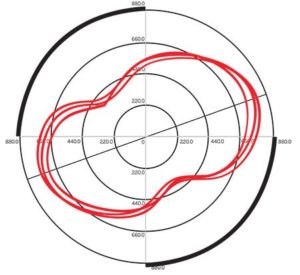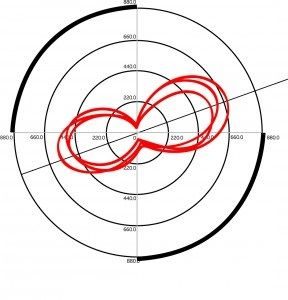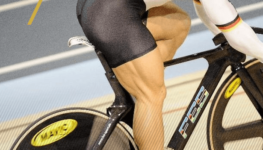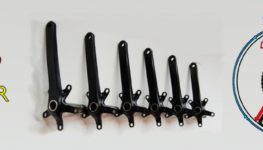Stomping BIG gears at a LOW cadence
Should you be a spinner or a STOMPer? Which is best and why?
In a previous article we looked at pedal action, now let’s look at pedal cadence; specifically the comparison between low resistance / high cadence and high(er) resistance / low(er) cadence.
We consider the two and their impact on triathlon performance
Feeling the pedals
Like any sport, mastery takes years and years of training; replicating movements and clocking up thousands of hours worth of training. In cycling terms this can mean up to 30,000km per year, for 10 or more years to gain the fitness and strength required for 1-day or multi-week races.
It is therefore no coincidence that many great cyclists originate from one of two places: 1) mountainous areas or 2) from flat areas where there is always a strong wind. Both locations provide the “conditions” required to build fintess and strength.
The other big factor that helps the great cyclists get great, like all top athletes, is the committment to the sport. To truly have the best chance of mastering movements, an athlete needs to be training through their maturation years (before, during and post puberty) whilst the neuromuscular system is “wiring” itself.
If an individual cycles 5-days a week, his / her body is going to wire the nerves and sensitise those limbs most regularly used – those associated with pedalling. It’s the same story for swimming and running.
These athletes develop a “feel” for the pedal and develop muscular endurance which allows them to produce high levels of power at high cadences – with big gears – for long periods.
Miss serious cycling training through your maturation years and you are not likely to “feel” the pedals. It’s not all doom and gloom though, we just need to train you in a different way!
Cycling for Triathlon
The big part of our overall coaching philosophy is that we don’t treat our adult non-swimmers, cyclists or runners like the single sport pro’s. This means we do NOT coach the traditional swim, bike or run sessions, drills or “technique”. We work with each athlete and find a movement pattern that suits their body as it is NOW.
This makes our athletes fast, strong, healthy and HAPPY. Athletes try to improve and quickly become demoralised after giving 100% every session but are unable to replicate “textbook” movements that elite single sport purists can.
The gender, age and history of an athlete are important reasons to not coach a triathlete traditional cycling techniques.
More important though is the fact that they are triathletes and will swim before the bike and will then have to run afterwards!
The Classic Approach
In spite of research for elite cyclists showing the opposite, the two main coaching points offered by many coaches is to:
- maintain a constant high pedal cadence – e.g. 90 rpm; and
- aim for 360° power transfer – push down, scuff under and pull up
Whilst this is not correct for elite cyclists, it is definitely incorrect for an adult and late comer to the sport, doing a TRIATHLON.
High pedal cadence with a 360° power transfer has two major side effects:
- the cardiovascular system is working hard(er) and so is strained;
- the big hamstring and glute muscles are ideally suited to the pushing down action (a squat);
- pulling back/up puts us into a biomechanically weak position using smaller muscles, the
- the run muscles – calves, hamstrings and hip flexors (the muscles used to pull up on the pedals) are being used continuously and so will be more fatigued (for the run)
Some maths – an Ironman triathlete adopting the 90rpm and push/pull approach over a 6hour bike section will complete: 360min x 90rpm = 32,400 pedal revolutions (just one leg!), or 64,800 complete revolutions.
You may be thinking “but that’s why I train – to get these stronger and more efficient!”

The problem is that neither will develop as you would expect or facilitate an effective run. Firstly, the cardiovascular system will be overused from delivering blood to the legs during the 64,800 revolutions. Secondly, the mechanically disadvantaged muscles (calves, hamstrings and hip flexors) will be burnt out from continuously trying to pull up on the pedals. Remember that in this example, there is a marathon to run after the bike!
There are many other coaches and studies discussing the side affects of adult, non-cyclists adapting this approach:
- https://europepmc.org/abstract/med/30817718
- http://blog.trisutto.com/come-in-spinner-the-bike-cadence-debate/
- http://blog.trisutto.com/cadence-debate-continued/
- http://burnhamcoaching.com/myth-of-pedaling-circles/
- https://www.cyclingweekly.com/fitness/why-amateurs-shouldnt-try-to-pedal-like-chris-froome-191779
- https://europepmc.org/abstract/med/30531486
An Alternate Approach
As a triathlete (and adult non-cyclist), you need be looking at cycling differently. The bike section is a means of getting from the swim to the run. Not a bike race! It is not necessary, or even desirable, to have the so-called perfect cyclist’s “technique”. The two key points here are:
- use a lower and (typically) gender specific pedal cadence; and
- STOMP only – applying force to the pedal on the down phase and relaxing the rest
To reduce cardiovascular strain, a triathlete should work on developing a big aerobic capacity along with strength and muscular endurance in the legs. This is achieved by pushing bigger gears at lower cadences and will produce the same speed, at lower revolutions, whilst being less stressful on the heart and lungs.

Pushing a bigger gear will develop leg strength while the reduced cadence stresses the cardiovascular system less. The less strained the heart is, the better off you’ll be in the run.
STOMPing down on the pedals (between 1 and 5 o’clock) and relaxing during the rest of the revolution stresses the run muscles less. STOMPing down primarily uses the quads and glutes, saving the calves, hamstrings and hip flexors.
Using the same maths as above (a 6hour Ironman distance ride), by strengthening the legs and lowering the cadence to 70rpm (bigger gears to maintain the same speed), the result is drastically altered: 360min x 70 = 25,200 pedal revolutions, or 50,400 for both legs!
14,400 (7,200 each leg) fewer revolutions will massively save the cardiovascular system and run muscles so the triathlete will be in a much better condition for the run.
Conclusion

STOMPing primarily uses the quads and glutes; the big pressing muscles in the legs. STOMPing is the most efficient action the legs can do (squatting). Pushing on the pedals is the natural instinct and also works with gravity, making it easier to do. Pulling up on the pedals is not a mechanically advantageous movement, the “pull” muscles will get tired way before your push muscles.
Additionally, the pull muscles are the primary run muscles so save 12,000 movements and you WILL run better!
Think about applying power through the 1-5 o’clock position then relaxing for the rest (literally!)
“1 to 5, power time”
Sample Session – 60 minutes
High resistance / low cadence training session, using a turbo, Wattbike or even a spin bike:
15min warm up – EASY effort at a natural cadence (70-ish for men, 80-ish for women)
15 x 2 minutes as – 1 minute HARD (BIG resistance) at 45rpm, 1 minutes EASY (LOW resistance) – even STOPPING!
15min warm down EASY





